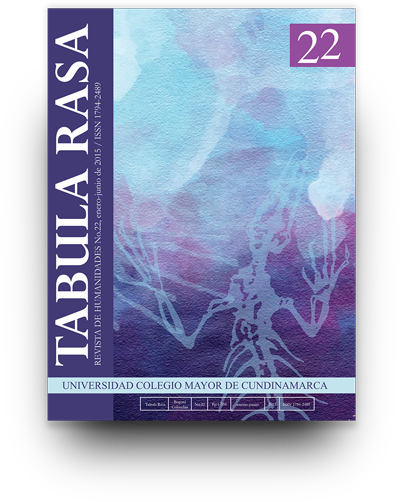Illusions and Sufferings of Emigration. The Case of Levantine Arabic, Muslim Immigrants to Chile 1930-1950
Las ilusiones y los padecimientos de la emigración, el caso de los inmigrantes árabes musulmanes levantinos a Chile 1930 – 1950
Show authors biography
This article analyzes the collective practices of Muslim Arab immigrants, within the time range that includes since their arrival in Chile, from 1900 to 1950, and their subsequent consolidation, which are manifested in the efforts to perpetuate and preserve their traditions, such as a language, rites and religious practices, along with their social organizations. These circumstances, although they coincide with those of their orthodox Catholic Levantine counterparts, found greater difficulties in the case of Muslims, being, among the total number of Arab immigrants, those of smaller numbers. Secondly, one of the most important rites for Muslims who have poured their culture and knowledge in the Americas and made persistent efforts to preserve their religious confession in the celebration of Ramadan will be analyzed.
Article visits 109 | PDF visits 89
Downloads
Abboud, A. 1953. El Sagrado Corán. Buenos Aires, El Nilo.
Abu-Ghazaleh, F. 2011. Ethnic Identity of Palestinian Immigrants in the United States: The Role of Cultural Material Artifacts. Texas, Lfb Scholarly Pub Llc.
Agar, L. y Cagni, H. 2009. Contribuciones árabes a las identidades iberoamericanas. Madrid, Editorial Casa Árabe.
Agar, L. y Rebolledo, A. 1997. La inmigración árabe en Chile: Los caminos de la integración El Mundo árabe y América Latina. Madrid, Libertarias Prodhufi.
Agar, L. 1982. «El comportamiento urbano de los migrantes árabes en Chile y Santiago». Tesis de Magister no publicada, Pontificia Universidad Católica de Chile.
Akmir, Abdeluahed. 2009. Los árabes en América Latina: historia de una emigración. Madrid, Siglo XXI.
Al Islah. 4 de febrero, 1933. «El gran día del Ramadán». Al-Islah.p. 2.
Araneda, J. 2013. «La inmigración árabe en América. Los árabes otomanos en Chile: identidad y adaptación, 1839-1922». Historia. 3(1): 393-396}
Baros, M. 2011. El imaginario Oriental en Chile en el Siglo XIX, orientalismo en la pintura y Arquitectura chilena. Alemania, Académica Española.
Baros, M. 4 de junio de 1927. «Nuestras instituciones». Oriente.p. 5.
Baros, M. 15 de enero de 1932. «Ramadán». Boletín árabe. p. 2.
Baros, M. 1 de enero de 1933. «Musulmanes y sus acciones societarias». Boletín árabe. p. 25.
Baros, M. 1 de marzo de 1933. «Nuestras Instituciones sociales». Boletín árabe. p. 2.
Baros, M. 1 septiembre de 1933. «Sociedad Beneficencia islámica». Boletín árabe. p. 45. Boletín árabe. 15 de noviembre, 1934. «Colegio árabe-español Villa Alemana». Boletín árabe. p. 3.
Boletín árabe. 30 de noviembre de 1934. «Preguntas al Boletín». Boletín árabe. p. 8.
Boletín árabe. 1 de julio de 1936. «Sociedad Islámica en Villa Alemana». Boletín árabe. p. 5.
Boletín árabe. 1 de agosto, 1936. «Unión musulmana protesta». Boletín árabe. p. 8.
Boletín árabe. 1 de enero de 1937. «La fiesta de Ramadán y las entidades islámicas».
Boletín árabe. p. 13.
Boletín árabe. 1 de julio de 1937. «Una radio rifará la sociedad islámica». Boletín árabe. p. 6.
Boletín árabe. 1 de septiembre de 1937. «Sirios y libaneses deberán adoptar su nacionalidad». Boletín árabe. p. 26.
Boletín árabe. 15 de marzo de 1938. «Los damnificados de Siria y la Unión Musulmana».
Boletín árabe. pp. 9.
Boletín árabe. 1 de abril, 1939. «Conferencia Taher al-Chammy». Boletín árabe. p. 9.
Boletín árabe. 15 de septiembre de 1939. «La sociedad El despertar árabe hachemita».
Boletín árabe. p. 4.
Brown, D. 2009. A New Introduction to Islam. Nueva York, Wiley Blackwell.
Cortés, J. 2005. El Corán. Barcelona, Herder.
Delgado, V. 2010. Revista La Nota: antología 1915-1917. La Plata, Universidad Nacional
de La Plata.
El Mercurio. 13 de abril de 1911. «Negocios callejeros». El Mercurio. p. 1.
Ferenczi, I. 1929. International Migrations. Vol. 1. Statistics. Nueva York, National Bureau of Economic Research.
Goor, A. 1966. «The History of the Grape-Vine in the Holy Land». Economic Botany. 20 (1): 46-64.
Hughes A. 2013. Muslims Identity. Nueva York, Cambridge University Press.
Karpat, Kemal H. 1985a. «The Ottoman Emigration to America, 1860-1914».
International Journal of Middle East Studies. 17 (2): 175-209.
Karpat, Kemal H. 1985b. Ottoman Population 1830-1914. United States of America, The University of Wisconsin Press.
Kramer, G. 2006. Historia de Palestina. Madrid, Siglo XXI.
McKeown, A. 2004. «Global Migration, 1846-1940». Journal of World History. 15(2): 155-189.
Olguín, M. 1990. La migración árabe en Chile. Santiago, Ediciones Instituto Chileno Árabe de Cultura.
Rebolledo, A. 1994. «La turcofobia: discriminación antiárabe en Chile 1900-1950». Revista Historia. 28: 249-272.
Ruiz Bravo, C. 1976. Antecedentes del nacionalismo en el próximo oriente; panorama de las ideologías en el Mashriq (1900-1952). Madrid, Editorial Instituto hispano árabe de cultura.
Said, E. 1978. Orientalism. Londres, Penguin Classics.
Samame, M. 2003. «Transculturación, identidad y alteridad en novelas de la inmigración árabe hacia Chile». Revista Signos. 36 (53): 51-73.
Seikaly, M. 2001. “Kuwait and Bahrain: The appeal of globalization and internal constraints”. En Joseph Kechichian (ed.) Iran, Iraq and the Arab Gulf States. Nueva York, Palgrave MacMillan.




